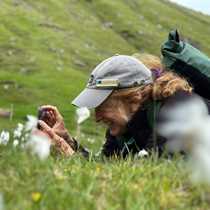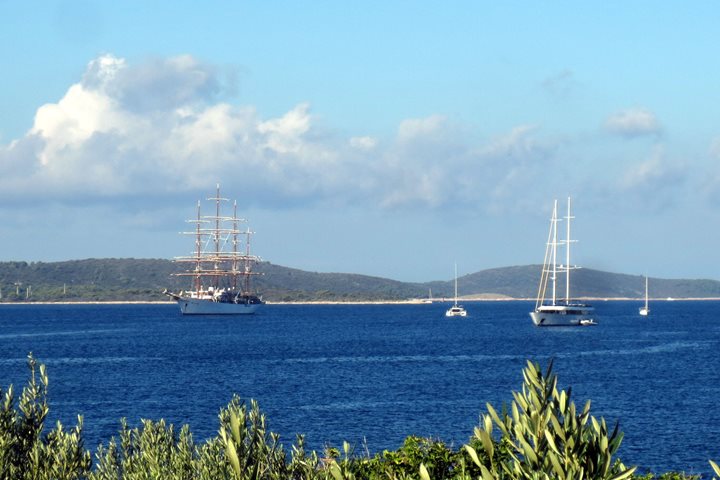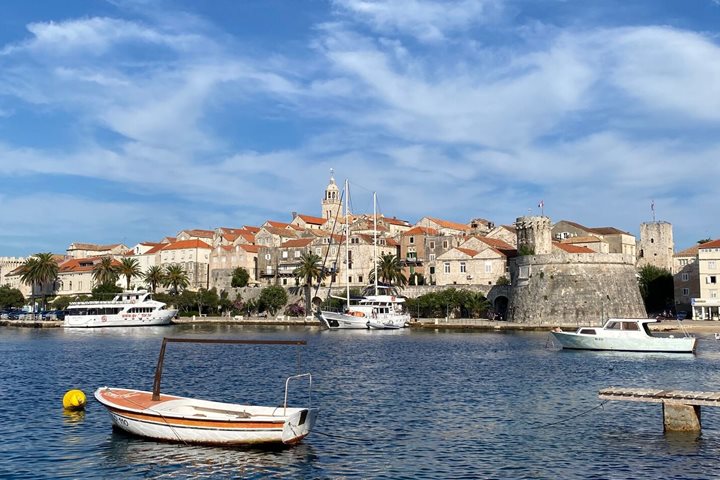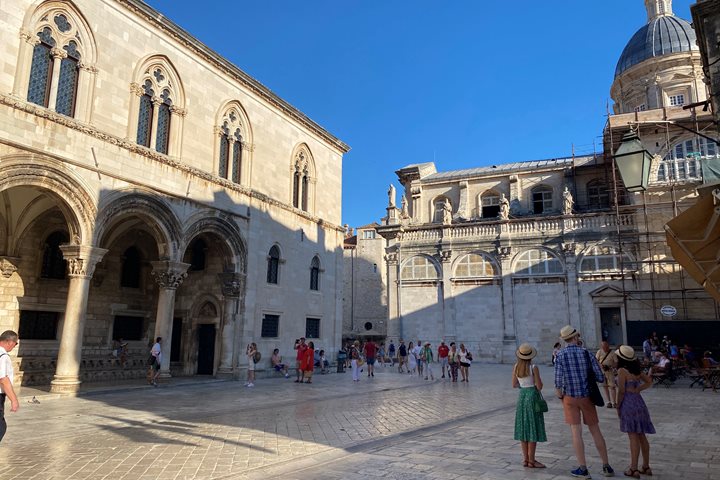Morning started with more of an autumn weather: cloudy and softly rainy. We started our tour from the ship driving first to the well-known Achilleion palace of the Empress of Austria Elizabeth, known as Sissy. The estate and its mansion were bought by Sissy. She personally undertook the responsibility of the mansion’s renovation and decoration, inspired by her love and interest in Greek mythology, history, and arts. She created an elegant and sophisticated summer palace that became her favorite shelter, where she could relax in isolated peace and tranquility far from the imperial demands and expectations of Vienna.
Besides the mansion itself, what additionally attracted our admiration were the beautiful gardens with rich vegetation of various tree and flower varieties, as a small taste of the island’s lush vegetation as well as the stunning views to the Bay of Gouritsa, to the turquoise waters of the Ionian Sea. In one of the nicest locations where stands the emblematic statue of the Dying Achilles; a marble statue that represents the Greek hero while he is trying to remove the arrow from his heel, depicting the hero in his lost “battle.” Achilles was the Empress’s favorite hero because he reminded her of her son Rudolf, and she named the entire palace after Achilles.
After our visit to the palace, we drove back to the main town where we spent time in the old part, fully emphasized by the times of successive foreign occupation–the Venetians, the French, and the British. The strong fortifications of the two forts built by the Venetians for securing Corfu’s strategic importance, and the Spaniada, one of the biggest and nicest squares in Greece that started as a vast open-air plateau for defensive purposes, and then under French rule the Liston was added on the far side in imitation of the renowned Rue de Rivoli in Paris. The Palace of St. Michael and St. George, the Residence of the High Commissioners, and the cricket field are all evidence of British Rule.
In the town we visited the Church of St. Spyridon, a typical Ionian Greek Orthodox Church but with a notable western influence, especially in its inner decoration. The Church is dedicated to the patron saint of the island, where his relics are kept, and is additionally known for its tall bell tower—the tallest in the town and that can always be seen from all over the island. We took in the flavor of the varied charm of the main town with its lovely stores and busy coffee shops, and we returned back to the ship for our afternoon departure to Katakalon.









